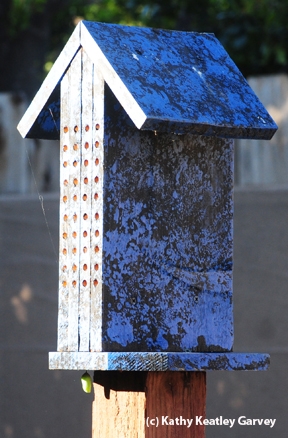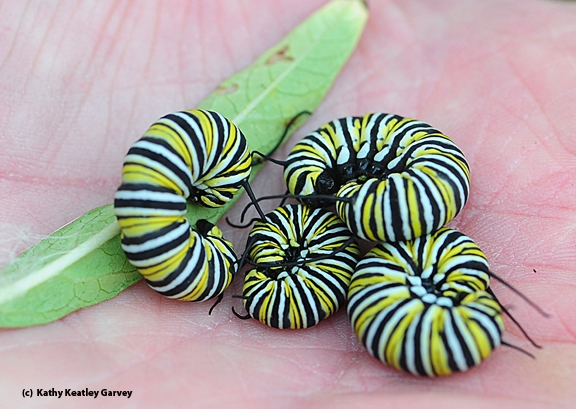
In an interview Oct. 21 with Beth Ruyak of Capital Public Radio (see http://www.capradio.org/58494), he says the California population is booming.
"This is the best monarch year in my part of California in at least a decade," he told Ruyak, "and I've seen more monarch caterpillars this year than in the last five to 10 years put together."
His former graduate student, Professor Matt Forister of the University of Nevada, Reno, joined him on the show, Insight with Beth Ruyak.Forister said the monarch butterfly population is thriving in Nevada, too."They make their way over the Sierra and go out into the middle of Nevada, so it's not surprising to see them out in the open lands," Forister told Ruyak. "But even in the city there were times this summer when I saw one every other day which hadn't happened since I've been in Reno for six or seven years."
Both Shaprio and Forister declared there's no evidence that the population increase is linked to California's drought, as some news media outlets have proclaimed.
Simply put, the monarch butterflies like warmer conditions, they said.
At our Vacaville, Solano County home, the monarchs are still laying eggs on the milkweed. Today we have a total of 14 chrysalids. One is on a bee condo (made by UC Davis Arboretum member Tom Tucker of Vacaville). The bee condo is meant to house leafcutting bees and mason bees, but birds land on it (the evidence is there!) and one meandering monarch caterpillar pupated beneath it (the evidence is there).
Native milkweed goes dormant in the winter, but the tropical milkweed, a non-native, "remains available" for the monarchs to lay their eggs in the warmer climates along the California coast, from Marin County to the south. Winter is when the monarchs go into a reproductive diapause and "they're not supposed to be interested in sex," Shapiro said. Listen what he says to do about that.
Attached Images:


